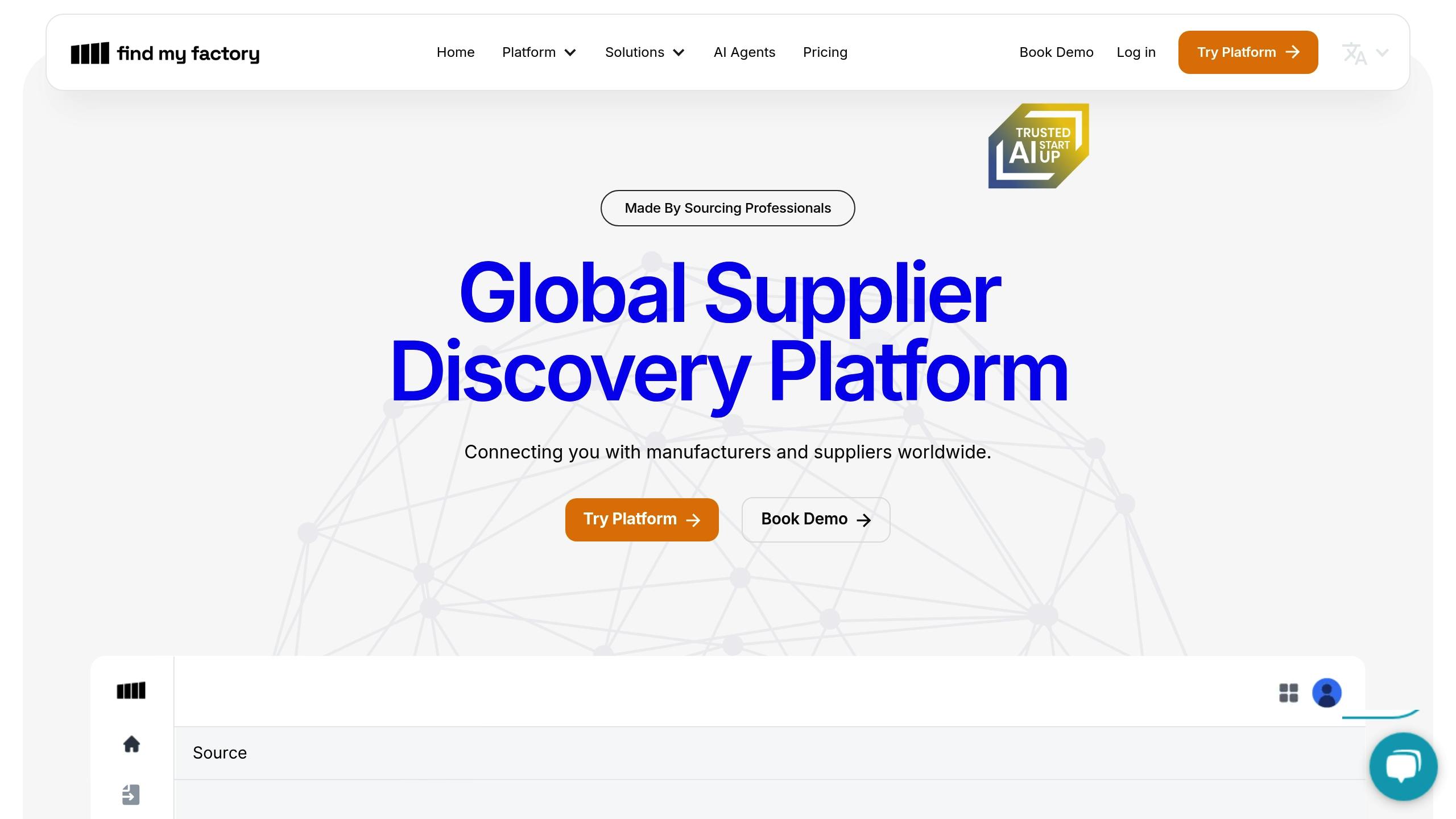Main Pages
AboutPricingSecurityCareerCustomersContactBlogFeatures
Monitor & EnrichDiscover & SourceRFI & EngageOur Socials
LinkedinLegal
Terms of UseMay 9, 2025
Explore how machine learning enhances supplier classification, boosting accuracy, reducing costs, and improving risk management for businesses.
Articles

Machine learning is transforming supplier classification by improving accuracy and efficiency. Here's what you need to know:
Learning TypeKey FeaturesBest Used ForSupervisedPredicts specific outcomesPerformance ratings, risk assessmentsUnsupervisedDiscovers patternsSupplier segmentation, anomaly detection
Machine learning simplifies supplier classification, helping businesses save time, cut costs, and manage risks more effectively.
Supplier classification relies on two main machine learning approaches: supervised and unsupervised learning.
Here’s a quick overview of how these methods differ:
Learning TypeKey FeaturesBest Used ForSupervisedPredicts specific outcomesPerformance ratings, risk assessments, compliance categorizationUnsupervisedDiscovers patternsSupplier segmentation, relationship analysis, anomaly detection
For either method to work effectively, high-quality, well-prepared data is a must.
The success of any supplier classification model hinges on the quality of the data it uses. Here are the most important data points to focus on:
For handling complex or high-dimensional supplier data, Support Vector Machines (SVM) can be effective. Meanwhile, Random Forests combine multiple decision trees to deliver reliable predictions.
Preparing data properly is critical for accurate supplier classification. SourceDogg highlights the importance of setting clear goals for data collection. This helps define the types of data you need, how often to collect it, and where to source it from.
Cleaning up data involves a few key actions:
Once your data is clean and standardized, the next step is creating features tailored to support accurate classification.
Turning raw supplier data into actionable features requires systematic transformation and enrichment. Susan Walsh from The Classification Guru explains, "Data accuracy is an investment, not a cost".
Here’s how different types of data should be handled:
Data TypeProcessing MethodPurposeInternal DataExtract from ERP and accounting systemsProvides core business metricsExternal DataGather supplier info from online sourcesAdds market contextTransaction DataAlign to a unified taxonomyEnsures consistent classification
Key steps for feature creation include:
The accuracy of your machine learning model hinges on these preparation steps. Susan Walsh captures it perfectly: "Supplier normalization is an exceptionally efficient way of doing this – I say it's like eating chocolate without the calories".
Once you have clean, detailed supplier data, choosing the right machine learning (ML) model becomes critical for accurate classification. The best algorithm depends on your data's structure and your specific goals.
Decision trees are particularly useful for breaking down supplier data into simple, binary decisions. They make the classification process easy to follow and explain, which is helpful when procurement teams need to justify decisions to stakeholders.
Here’s how some common algorithms match different supplier classification needs:
Algorithm TypeBest Used ForKey AdvantageDecision TreesCategorical supplier dataStraightforward decision pathsRandom ForestComplex supplier attributesImproved accuracy with multiple treesK-Means ClusteringSupplier segmentationIdentifies natural groupings
Research highlights that companies using effective supplier classification can see:
After selecting the right algorithm, the next step is building a model tailored to your supplier data.
Turning your algorithm choice into a working model involves a structured, step-by-step process. This ensures the model meets organizational goals while adhering to data privacy standards.
Here are the main stages:
Automated ML platforms and CI/CD pipelines can streamline deployment and monitoring. These tools help maintain steady performance while allowing adjustments as business needs evolve.
For added value, consider integrating ESG (Environmental, Social, and Governance) metrics into your model. Companies excelling in ESG often see 10–20% higher valuations.
Machine learning (ML) outputs can help identify supplier segments and assess risks. To make the most of these results, focus on metrics that directly influence procurement decisions. These metrics serve as a foundation for improving procurement strategies:
Metric TypeWhat It MeasuresWhen to PrioritizePrecisionHow accurate positive predictions areWhen avoiding false supplier approvals is keyRecallHow well positive cases are detectedWhen detecting critical supplier risks is essentialF1 ScoreThe balance between precision and recallFor complex supplier evaluations
A report by KPMG highlights that nearly 50% of organizations struggle with visibility into tier-one supplier performance. This lack of insight underscores the importance of using these metrics to drive better procurement outcomes.
By leveraging these metrics, ML can guide smarter procurement decisions. For example, ML-powered classification helps refine supplier selection and improve risk management. A notable case is Apple's supply chain transformation, where ML is used to optimize shipping, distribution, and demand forecasting across markets.
To fully utilize classification results, follow these practices:

Find My Factory offers a great example of ML's practical benefits. The platform uses AI to analyze financial indicators, industry experience, and ESG practices, providing detailed supplier insights. This aligns with Gartner's observation that businesses increasingly value closer, more collaborative supplier relationships.
During the COVID-19 crisis, Isinnova showcased innovation by using rapid prototyping to produce critical respirator valves in just six hours, addressing urgent supply chain needs.
The AI supply chain market is expected to hit $58.55 billion by 2031, reflecting the growing importance of ML in supplier classification and management. Companies that embrace these tools are better equipped to build resilient and efficient procurement systems.
Machine learning (ML) is revolutionizing supplier classification by improving accuracy, cutting costs, and identifying risks more effectively. According to McKinsey, ML enables supply chain professionals to gain deeper insights and predict issues in logistics costs and performance before they arise.
AdvantageImpactKey MetricAccuracyReduces errors~95% accuracyCost EfficiencyLowers expensesUp to 40% savingsRisk ManagementImproves monitoringReal-time detectionProcess SpeedSpeeds up evaluationsAutomated classification
IBM's procurement team showcases the practical benefits of ML. Their algorithms for spend analysis uncovered hidden cost-saving opportunities and improved supplier categorization accuracy. The procurement software market is expected to grow significantly, from $8.03 billion in 2024 to $18.28 billion by 2032. These advancements set the stage for actionable strategies to implement ML effectively.
To integrate ML into supplier classification, consider these steps:
"The shift brought by AI in 2024-2025 is not just about adopting new tech; it's about reimagining procurement and unlocking new growth and success opportunities." – Focal Point
Insights & Ideas